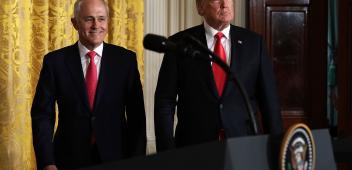The rise of financial engineering to hedge against market panic
Originally published in The Australian.

The sudden rise in UK bond yields caused such a market panic that the Bank of England found it necessary to reverse its unwinding of quantitative easing and make substantial bond purchases to settle the market.
This seems to have been successful, and the BoE plans to resume its unwinding of QE.
But this raises the question: have markets become so fragile that the central bank must step in routinely to steady them?
The particular problem in bond markets seems to be fairly specific to the UK.
There are substantial defined benefit pension funds which have obligations to pay fixed-nominal value pensions in the future. They could hedge these future obligations by buying bonds which would mature at the time that the obligations fell due. Whatever happened to bond prices in the meantime, the fund would have enough money to pay their obligations when they fell due.
But these funds are still in accumulation phase, so didn’t actually have enough money yet to buy the full array of bond maturities needed to achieve this hedging. So they bought some bonds, and borrowed short-term – using the bond as collateral in a repurchase agreement – which gave them the money to buy another bond, which in turn could be repo-ed to buy another bond. Successive repos would allow them, at least in principle, to match their future obligations.
Of course in practice there were many complications and permutations on this simple narrative. For example, they also bought other assets in the hope of higher returns.
In the meantime, these transactions were marked to market on the fund’s balance sheet. This didn’t, in itself, undermine the fund’s balance sheet as their liabilities fell – their long-term obligations were now discounted with the new higher interest rates.
But as bond yields rose and the current value of the bond fell, their counterparty lender – understandably – wanted more collateral. The pension fund was hedged against its long-term obligations, but not against the reasonable demands for more collateral right now.
As the funds scrambled to provide this collateral, their asset sales pushed bond prices sharply lower. This bond-fright is now, it seems, over, and regulators everywhere will take a hard look at the ongoing implications.
But the scare is symptomatic of a much deeper problem: interest rates have been too low for too long. The outsized impact of these bond revaluations reflects just how low interest rates had gone. No amount of financial engineering could hedge against this risk.
This distortion has become embedded in many balance sheets. As interest rates return to normality, the big changes in asset values will distribute unwelcome surprises to many market participants.
The outsized impact of these revaluations reflects just how low interest rates had gone.
Over the last year UK 30-year bond yields have risen four-fold – from less than 1 per cent to over 4 per cent, almost halving the value of the bond.
No surprise that the repo lenders wanted more security.
This is just one reminder of the current quandary for central banks. There is some urgency to return interest rates to normality, but this would involve portfolio adjustments which, while feasible if spread over years (as is the norm), might push some balance sheets over the edge if done quickly.
The dilemma is global.
The shift to near-zero interest rates in the decade following the Global Financial Crisis (orchestrated by the US Federal Reserve), gave central banks around the world (including Australia) little choice but to follow. Central banks may be independent from their domestic politicians, but not from the Fed.
When normality is restored, banks everywhere should make two things clear.
First, it was a fundamental mistake to set interest rates so low – negative in inflation-adjusted terms – for so long. When the time came to exit from these low rates, those who held bonds were poised to exit ahead of the crowd, before they were caught when the music stopped.
Not everyone could get out in time. It was not going to be a smooth painless adjustment.
Second, central banks should make clear that market-maker-of-last-resort is not part of their routine function.
Financial markets, which have relied for decades on the Greenspan put – Fed intervention to support falling markets – must now become more self-resilient, able to withstand whatever changes in policy interest rates that central banks need to make in order to maintain price stability.
The pressure on central banks to act as fail-safe back-up for financial markets, especially bond markets, comes not only from the vocal self-interest of market participants, but also from governments which need stable bond markets to fund their budget debt at the lowest cost to the taxpayer.
Thus the action of the BoE made sense, and there will always be a place for central banks to stabilise key markets when they become dysfunctional, just as there is for lender-of-last resort to stabilise banks in a crisis.
But the frequency of intervention in recent decades suggest that the overall financial sector is overly fragile.
Ideally, global financial markets should move to the framework discussed after the GFC, where the core of the financial sector – banks and the payments system – have watertight stability but this core sector is ring-fenced from interaction with the huge expansion in complex financial products that should be buyer beware.
Then central banks could concentrate on their core function – price stability.



